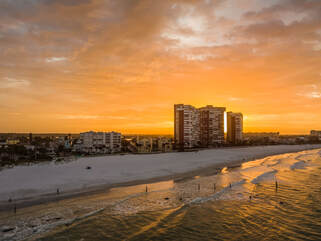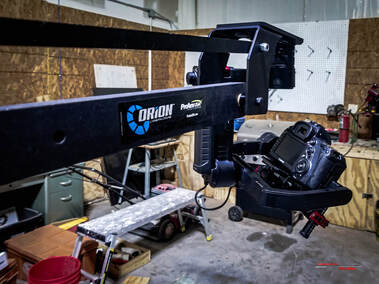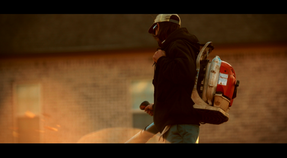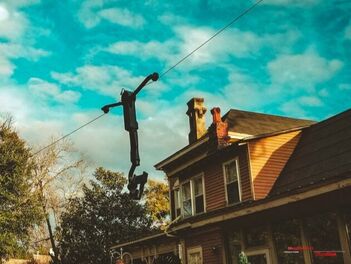
Several people found our last article about free online video production courses very helpful. We wanted to share some similar resources for photographers to use too. That's what we're going to look at today with this blog article!
Like video production, photography is also an art. It's easy to take a photo these days, but taking a GREAT photo requires some talent and skill. Today, we're going to share some free online certificate courses that will teach you more about photography and photo editing!
1 Comment

Video production is an art. Like all artforms, you never truly finish learning and improving your video production skills. There's always room to improve and learn something new!
That's why today, we're going to show you some free online video production courses you can take to improve and sharpen your videography knowledge. You can also get a certificate for each course you pass which can be added to your resume! 
Presets for Adobe Premiere Pro can help you save a lot of time when editing your footage. They allow you to quickly add an effect or a set of effects with specific parameters. You can find new presets for Adobe Premiere Pro all over the internet. Some website offer free Premiere Pro presets you can download and use at no cost. There are also presets you'll have to purchase in order to use. But whether they are free or paid, new presets won't be any help for you until they are accessible in Premiere.
So what's the best way to install new Premiere Pro presets once you download them? There's actually a couple of ways to do it, but today we're going to show you the easiest way to install new presets in Adobe Premiere Pro!  One of our production cameras on the jib crane One of our production cameras on the jib crane People often ask us about what kind of production equipment we use on our films and photo projects. We actually started out on nothing more than an iPhone and used a towel closet for a sound studio. We have been building ShadowCast Studios ever since then and now have an extensive collection of production equipment at our disposal. The key to building a studio is to continuously reinvest in yourself and your work. This is how we've grown over the past several years. Today we are going to take a look at the main production cameras we're using on our projects as of 2022. This won't include all of our gear, but it will show you the cameras that are fundamental to our projects and used regularly on our shoots. These are the workhorses of our projects.  An example from our stock portfolio An example from our stock portfolio
Stock content is in high demand these days. Many marketing agencies, businesses, bloggers, influencers, social media users, and other people trying to stand out online use stock material in their promotional content. Having appealing visual content is a vital part of capturing attention in today's fast paced, modern age. Not everyone has the ability, equipment, skill, and/or time to produce the content they need from scratch. The quality of the images or footage is also a major factor giving stock content it's appeal.
For someone with no equipment or photo/video skill, it is far more cost-effective to license stock content than to buy a camera, trying to figure out how it works, buying editing software, and then attempting to produce the content themselves. Also, people like marketers, web designers, etc. deal with a wide variety of content and large numbers of projects for different clients. Stock content is critical to their work because they often require stuff you can't just step out of your door and snap a picture or shoot a video of, like footage from the summit of Mount Everest for example. We have been producing stock for a few years now. This article is going to introduce you to stock production and help you get started selling your own stock content to earn money doing what you love!  Our jib equipped with our gimbal Our jib equipped with our gimbal Among some of the bigger equipment upgrades we made in the later part of 2019 were the upgrades and modifications to our jib crane. Some of these were called for out of necessity, such as the stronger mounting hardware we installed to accommodate the heavier cameras we now use. Other upgrades increased functionality and ease-of-use, such as a tilt-lock mechanism, a monitor mount, and more. However, there were two upgrades we made which really expanded the creative possibilities our jib provides. These two upgrades are gimbal mounting hardware and a motorized pan/tilt head. We often get asked about what types of shots these modifications allow us to produce, what the differences in the two are, how do we decide which one to use, and what our thoughts are about both. Today, we'll not only tell, but also show you some samples of the cool camera moves these modifications allow us to capture with our jib crane. We'll also share some of the pros and cons, as well as our own thoughts and opinions of both of them. If you have a jib crane, these upgrades are worth looking into.  As a filmmaker or photographer, you would probably love to sell physical prints or movie posters. A physical print brings your photo or poster to life and makes it a tangible object that people can experience. But producing and selling prints is out of your budget range right? You may think only the big-name studios can afford to do that and actually make money on it. After all, it's a big risk to invest in inventory unless you know people will buy it. If you order prints, then you have hundreds or thousands of dollars tied up in inventory that may or may not sell. And printing high-quality images in-house is even more expensive unless you already own all the equipment and printers needed. So it's out of the question until you make it big, right? Actually no, it's not. Today, we're going to show you how you can offer prints, posters, and other products without owning any inventory or investing any money upfront.  Recently, we released a new video for Real Turf Solutions, a landscaping company that has us do all of their production work. In this video, titled Powering through Winter, there was a short shot with a very unique look. We have had some people ask how we achieved the effect which was captured 100% in-camera. We'd love to say that it was a well planed cinematography technique, but we'd be lying. In truth, it was, as many great shot are, created purely by chance. Now that we have discovered this effect though, we will be looking for new ways to use it in future productions. So what is this effect and how did we do it? We'll show you that in this article.  A drone can give you unique and epic shots for your projects. However there are times when using a drone just isn't possible or practical. The area you are filming in might have laws preventing you from using a drone. Other places, such as dense woods might make it impossible to fly a drone safely. Then there are events with large crowds where flying a drone presents safety and even legal issues. If you are filming near airports, you will likely be in a no-fly zone for drones. So how can you get smooth overhead shots in these situations? Today we'll look at an alternative to drones which can come in very handy on your projects.  Our C100 MkII on our 15mm rail rig. Our C100 MkII on our 15mm rail rig.
The 15mm rail camera rigs are sometimes described as "Barbie for filmmakers." A rig allows you to add a wide range of equipment to enhance your camera's functionality and make it easier to capture amazing shots.
It provides a more stable platform for filming than can be achieved just by holding the camera directly in your hands, but it still allows some motion which is great for making more intense, dramatic action shots. It gives you a handheld look without excessive jittering and shaking that would distract the audience. When you want to be completely stable, a rig can easily be mounted to a tripod or other support. We have been using a camera rig for years in many of our productions, and even though we now have motorized gimbals and steadicam systems, we still find our shoulder mounted camera rig very useful in many situations, such as shooting exciting action shots. It also provides a great deal of extra versatility that other supports can't. A rig is, in our opinion, the best support platform to start out with using, and one you will continue to find use for throughout your production career. We won't cover every accessory you can mount on a rig, but lets look at some key elements of a camera rig that you should remember as you build your own! |
Quick Browsing |
ShadowCast Offers |
ShadowCast ResourcesVertical Divider
|
ShadowCast ShowcaseVertical Divider
|
© 2024 ShadowCast Productions and Talent Studios. All Rights Reserved except where otherwise stated.

 RSS Feed
RSS Feed



